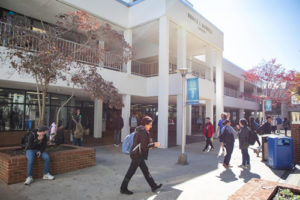Colleges, universities, and community college systems are grappling with how best to plan, implement, and deliver artificial intelligence (AI) solutions to the maximum benefit of students, faculty, administration, and community stakeholders. As I interact with colleagues across the country, they all know it’s no longer a question of “if” but “how and when and to what end.”
While the needs of every institution are obviously going to vary based on size, student profile, public versus private, I would like to offer up some useful observations and takeaways based on our first steps in this AI journey at the North Carolina Community College System (NCCCS).
About us: We’re the third-largest community college system in the United States, with 58 campus locations, more than 750,000 students, and more than 30,000 faculty and staff. The taxpayer investments in the system have been consistent, considerable, and continue to generate economic growth and development across North Carolina.
3 takeaways about our higher-ed AI projects
Takeaway 1: Start small and grow incrementally.
The best and most effective strategy won’t work unless you can show early successes. Provide your campus community with the roadmap and be clear what success looks like for every step. Here at NCCCS, that crucial low-hanging fruit is in organizing and mapping our knowledge.
Related: What will AI and robotics mean for higher education?
We have a tremendous amount of intellectual capital that’s dispersed, which is at risk both from a tech and a human perspective. To start with the latter, we look at the graying of our talented faculty population, what we call the Silver Tsunami, carrying around an incredible amount of wisdom and knowledge gained over the course of long careers; there’s a risk of that knowledge disappearing as they retire.
Then there’s our “Area 51” warehouse full of information and knowledge—from ceramic pots to videos to structured data to conference papers. We need to digitize, categorize, and curate all of these assets in a searchable form.
And speaking of institutional intelligence, we’re lucky to have an extremely skilled professional staff, without whom projects of this magnitude would be difficult to pull off.
We are in the midst of this process now and will soon be making our first presentation to faculty and staff. This is our starting place.
Takeaway 2: Determine a clear end goal.
While it’s crucial to build confidence with early success, achieving buy-in and the necessary budget and institutional support means outlining a clear objective (or objectives). From a leadership perspective, we all want to be prepared to innovate and have our institutions transform to meet the needs of students. That’s the top-level piece we all have in common.
But that common-currency rhetoric needs to be furthered based on the needs, plans, and discrete missions of your institution. What does success look like? Our goal is to tie this to economic development and job placement. That’s why the system was created, and why we need to use AI to more effectively educate students and enhance their experience. As a driver of economic development in North Carolina, we are looking for measurable outcomes and for dramatic improvements in how we measure those outcomes. The more we can show our value to the North Carolina General Assembly and the taxpayers, the better as we accelerate innovation.
Takeaway 3: Keep the data in-house.
To make machine learning valuable, you need to have it learn from the organization’s knowledge. And we decided that our brain must remain under the control of our system inside our firewall.
This approach of having AI under our control—all the way to the source-code level—is one that other institutions need to understand the importance of. There are a lot of AI companies out there looking to break into the higher-ed space and when they offer free services in exchange for giving them your data, that’s a bad bargain. We’re doing it the right way in North Carolina.
Related: How AI will shape the university of the future
Machine learning is powerful, intimate, and requires full transparency and full control. We’ve partnered with Tanjo, a company in our backyard out of the Research Triangle, that is ensuring we have that control. Their expertise dates back to 2009, and they’ve been ideal technical partners and act as force-multipliers for us on this massive undertaking.
I’m relatively new to higher ed and the community college system. I’ve had the pleasure and honor of learning and hearing the stories of students, faculty, and staff. Coming from a military background, I see learning from a different angle. Our vision is that AI projects will augment human engagement and the crucial relationships between students, advisors, and faculty.
- Survey: More students want to go to graduate school - April 24, 2024
- Educause, AWS launch generative AI readiness assessment tool for higher ed - April 23, 2024
- A bungled FAFSA rollout threatens students’ college ambitions - April 19, 2024

